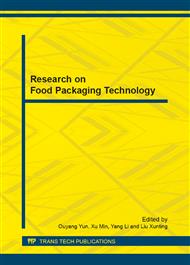p.265
p.269
p.273
p.278
p.282
p.286
p.292
p.296
p.301
Research on the Impact of the Contrast between the White Text and Black Background to Visual Sharpness
Abstract:
This research is to find out the relationship between objective measurement contrast and clarity to the human eye perception, via the analysis of different tone background and white text, based on the text contrast properties in ISO 13660 standard, to do some basic research for the black background of print quality evaluation. Experimental results show that perceived sharpness and contrast into positive correlation, the greater the contrast, the sharpness perception will increase accordingly, but it is not linear relation, in contrast, under the condition of smaller contrast, small changes of contrast will cause great changes in the perception of the definition, with the increase of contrast, perceived definition changes tend to be gentle, it is important to note that contrast is of the biggest objective measurement results in background of 100% black tone, whereas the human eye subjective sense of clarity is not the best, it turns out that the best sense of clarity in background tone value is around 90%.
Info:
Periodical:
Pages:
282-285
Citation:
Online since:
November 2013
Authors:
Keywords:
Price:
Сopyright:
© 2014 Trans Tech Publications Ltd. All Rights Reserved
Share:
Citation:


